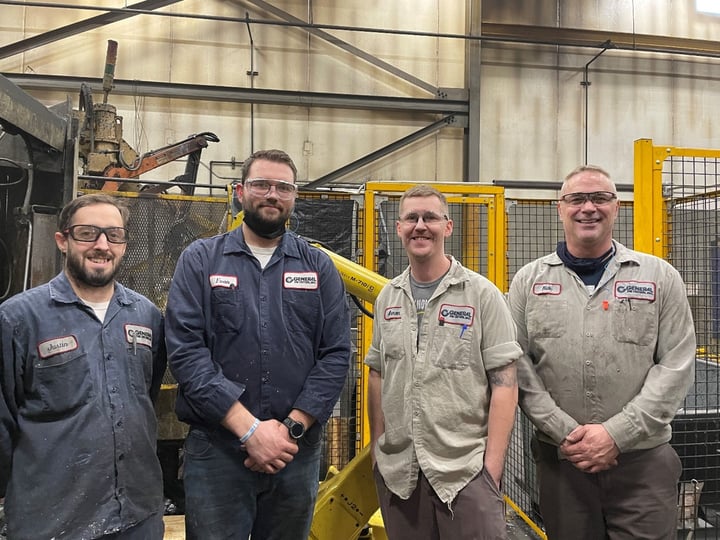
Automating a manufacturing operation is not as simple as it appears. The best thing about automation is that it does the same thing every time. The worst thing about automation is that it does the same thing every time! Even the most consistent processes often require small adjustments by the person to perform the task. Elon Musk said, “People are underrated,” when explaining why he reduced automation in one of his assembly plants. I agree. A driven, properly trained person will usually run the socks off an automaton cell. Unfortunately, people are in scarce supply, and this may be our new normal. Automation is no longer a luxury; it is a necessity.
We recently completed our 10th automation cell in the last 4 years. This project was an existing 600-ton HPM die casting machine that required maximum flexibility due to frequent job changes. The time-consuming portion of a die casting automation setup is the die spray. We used a Fanuc M16 robot for a spray robot replacing the standard 2 axis die sprayer typically used for this application. While using a robot to spray is certainly not new in the die casting industry, it is our first step in this direction. A robot allows for infinite spray patterns at speeds which well exceed a 2-axis sprayer or even the most skilled human hand sprayer.
Most manufacturers hire automation companies to design and install their cells. I am proud to say that we have installed each of these cells with our own automation team. 4 years ago, we challenged a cross-functional group of Engineers, Process techs, and Maintenance techs to the monumental task of automating our entire plant. In this short time, they have developed all the skills and knowledge to integrate automation into a complex manufacturing cell.

While I am delighted with our accomplishments, I see our progress as just the first phase of our journey. There are unlimited opportunities to improve efficiencies and quality using automation. The possibilities for this new core competency will only be limited by our imagination. That is exciting!

